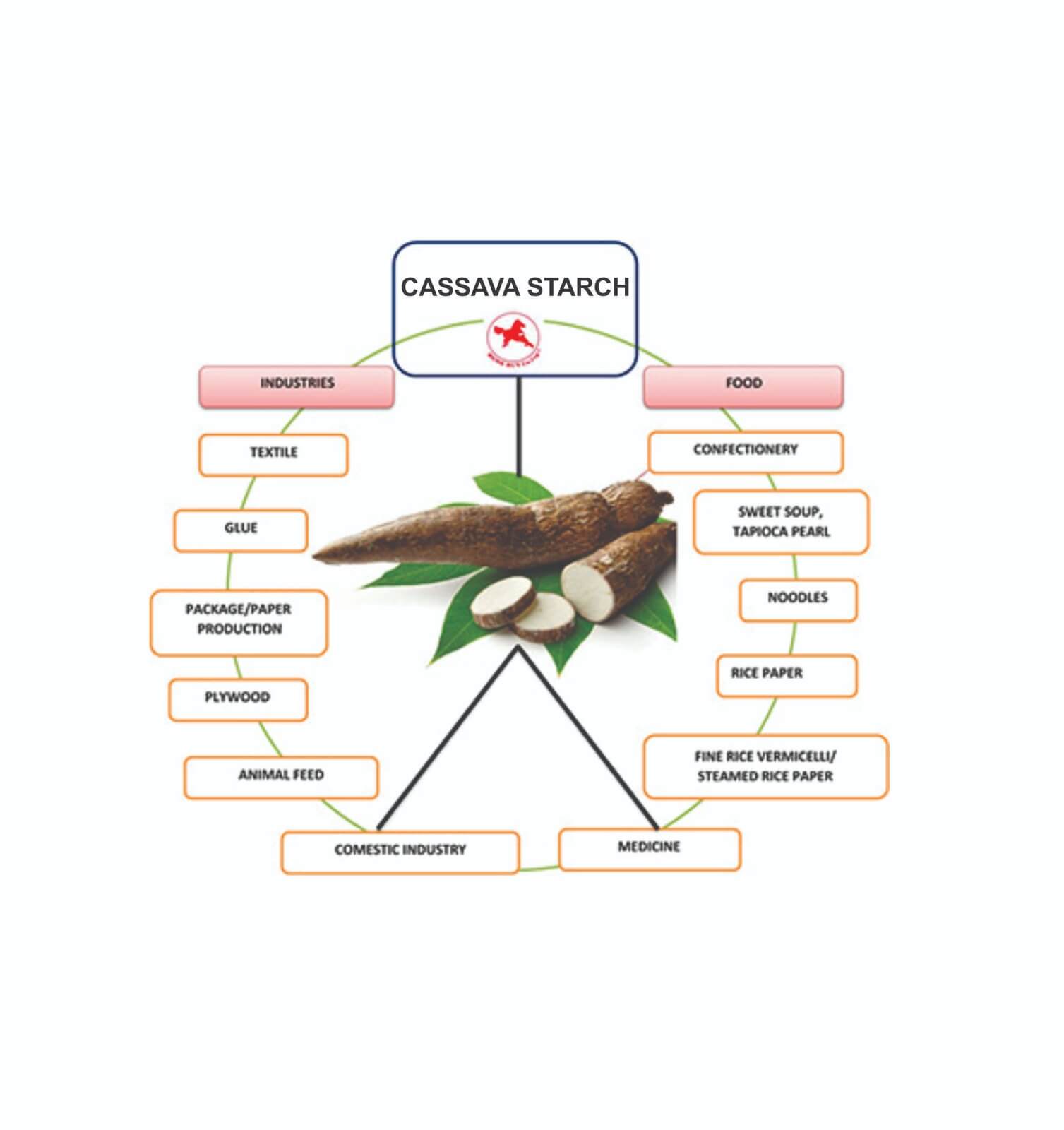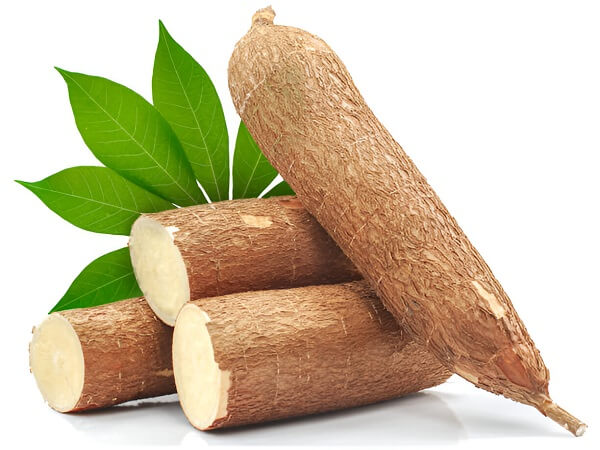Cassava stands out among food crops with its remarkable versatility and abundance of uses. With over 200 different products catering to human consumption, livestock feed, and industrial applications, its potential knows no bounds.
In West and Central Africa, where cassava holds the status of staple food and cash crop, its impact reverberates throughout the economy, providing millions of jobs annually. The culinary world is not immune to its allure, as innovative chefs continually craft delectable dishes that push the boundaries of creativity.

These culinary creations not only tantalize taste buds but also fuel a burgeoning local food tourism sector and export industry, with African-inspired recipes finding homes in eateries across Europe, America, South America and Asia.
Cassava Ambassadors has taken on the crucial role of championing the untapped potential of the cassava value chain and educating communities on its proper utilization as both a staple food and commercial crop. With a passionate dedication to filling this void, our initiative is committed to introducing and consistently educating the region on the myriad uses of cassava. Through our unwavering commitment, we aim to empower communities to harness the full potential of cassava, unlocking opportunities for sustainable growth and development.
Cassava is considered as one of the oldest cultivated crops, its domestication started about 5,000 and 7,000 years ago in the Amazon rainforest (Allem, 2002). Cassava is currently grown in 105 countries around the world and although cassava is predominantly used for human consumption worldwide, its utilization vary greatly by regions (FAO, 2017; Latif and Mller, 2015).
In developing and tropical countries, cassava has nutritional and economical importance. It feeds between 500 million and up to 1 billion people worldwide and is the 4th major staple crops in terms of calories after wheat, rice and maize (FAO stat, 2017; Latif and Muller, 2015). Cassava varieties are commonly classified in 2 categories: sweet and bitter according to the concentration of cyanogenic glycosides in the crop. Sweet cassava contains low levels of cyanogenic glycosides (100ppm) while bitter varieties contain higher levels of cyanogenic potential. The cyanogenic potential is not directly correlated with the bitterness of the plant (Bechoff, 2017). The high levels of cyanogenic glycosides require thorough detoxification process to reduce to compounds to safe level (Montagnac, Davis and Tanumihardjo, 2009b)
Cassava, a versatile crop is cultivated either independently or in conjunction with complementary crops like maize, plantain, various vegetables or legumes. Across East Africa, cassava holds a time-honored status as a staple food, a source of vital nutrition and a key contributor to income security, particularly among small stakeholder farmers. This crop is predominantly cultivated in Tanzania,Uganda, Rwanda, Kenya and Burundi.
Make no mistake! There is a cassava revolution in Sub-Sahara Africa. In light of the prevailing climate change, food/nutrition security experts, governments, development partners, and non-governmental organizations are realizing this root crops potential for empowering small holder farmers in rural communities and delivering food/ nutrition security. The East African Cassava Trade Fair & Festival Kenya Edition is delighted to take the lead in promoting the farming, processing and consumption of this Traditional High Value Crop in the region.
Unlocking Food Security: The Role of Cassava
In the quest for global food security, cassava emerges as a silent hero, offering sustainable solutions to nourish communities worldwide. With its remarkable adaptability to diverse climates and soils, cassava stands as a resilient crop capable of thriving in challenging conditions where other staples may falter.
The Cassava Advantage
- Nutritional Powerhouse: Beyond its hardy nature, cassava packs a nutritional punch, serving as a vital source of energy, carbohydrates, and essential vitamins and minerals. Rich in fiber, vitamin C, and folate, it plays a crucial role in combating malnutrition and promoting overall health.
- Climate Resilience: As climate change intensifies, the importance of resilient crops cannot be overstated. Cassava’s ability to withstand drought, heat, and poor soil conditions makes it a lifeline for farmers facing unpredictable weather patterns, safeguarding food production in the face of adversity.
- Versatile Applications: From traditional dishes to modern innovations, cassava offers a myriad of culinary possibilities. Whether ground into flour for baking, boiled as a side dish, or processed into snacks and beverages, its versatility makes it a cornerstone of culinary traditions across the globe.
Empowering Communities
- Economic Opportunities: By cultivating cassava, communities unlock economic opportunities that extend far beyond the farm gate. From smallholder farmers to agro-processing enterprises, the cassava value chain creates jobs, stimulates local economies, and fosters sustainable livelihoods.
- Food Sovereignty: Cassava empowers communities to take control of their food supply, reducing reliance on imports and ensuring access to nutritious, locally-produced staples. By strengthening food sovereignty, cassava lays the foundation for resilient, self-sustaining food systems.
- Environmental Stewardship: As a low-input crop with minimal environmental impact, cassava aligns with sustainable agriculture principles, promoting biodiversity, soil health, and water conservation. By choosing cassava, we embrace a more ecologically responsible approach to food production.
Why Cassava is Key to Food Security
In a world grappling with the dual challenges of population growth and climate change, securing sustainable food sources has never been more urgent. Enter cassava – an unassuming root crop that holds transformative potential for global food security. Here’s why cassava deserves its place at the forefront of agricultural innovation:
1. Resilience in the Face of Climate Change
Cassava thrives where other crops fail. Its remarkable resilience to harsh weather conditions, including drought and poor soil quality, makes it a lifeline for farmers in regions affected by climate change. As rainfall patterns shift and arable land becomes more scarce, cassava offers a reliable and adaptable food source that can sustain communities where conventional crops struggle.
2. High Nutritional Value
Cassava is more than just a calorie-rich staple. It is a versatile food that can be processed into flour, chips, or starch, providing essential carbohydrates, fiber, vitamins, and minerals to millions of people across Africa, Asia, and Latin America. With proper fortification, cassava products can also address micronutrient deficiencies, such as iron and vitamin A, contributing to the overall health and well-being of vulnerable populations.
3. A Driver of Economic Growth
Cassava’s role extends beyond feeding people – it fuels economies. From smallholder farmers to large-scale processors, cassava is an income-generating crop that can transform livelihoods. Its by-products are used in the production of animal feed, biofuels, and industrial products, creating new market opportunities. By investing in cassava value chains, countries can not only reduce hunger but also stimulate rural economies, reduce poverty, and create jobs.
4. Food Sovereignty and Local Empowerment
Promoting cassava as a staple food reinforces food sovereignty – the right of people to define their own food systems. In regions where cassava is indigenous, such as sub-Saharan Africa, it represents more than just sustenance; it is a symbol of cultural heritage and self-reliance. By harnessing local knowledge and supporting cassava production, communities can reduce their dependence on imported grains, enhancing their resilience to global food market fluctuations.
5. Versatility and Innovation in Food Systems
Cassava is a champion of food system innovation. From traditional dishes to modern gluten-free alternatives, cassava fits seamlessly into diverse diets. Its potential for industrial applications, such as producing biodegradable packaging, highlights its role in shaping a more sustainable and circular economy. As the world looks for solutions to reduce waste and combat climate change, cassava’s versatility will be key in building a more resilient food system for future generations.

Conclusion
Cassava – The Future of Food Security
Cassava’s unique combination of resilience, nutrition, economic potential, and cultural significance makes it a cornerstone in the fight against global hunger. As we face an unpredictable future, cassava stands as a sustainable, scalable, and secure solution that can nourish communities, empower economies, and protect the planet. By embracing the power of cassava, we are not only addressing immediate food needs but also sowing the seeds for a more food-secure world.

